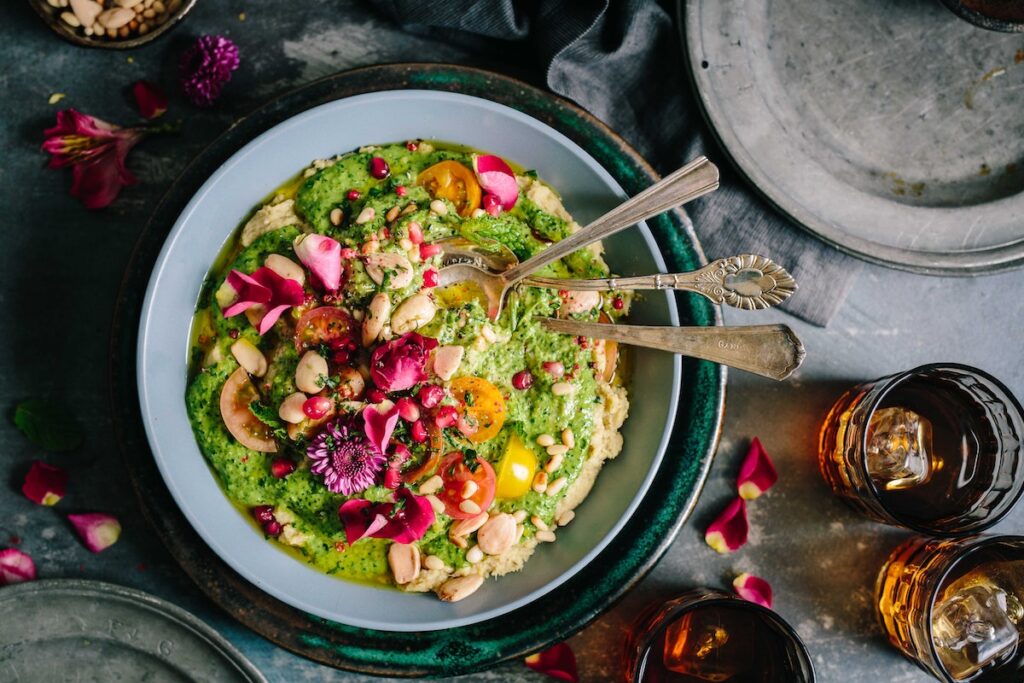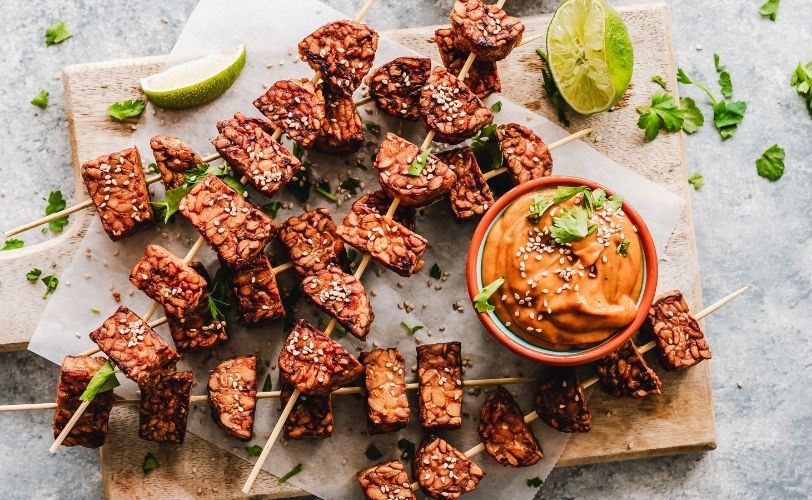What is an endometriosis diet?
Is there such a thing as an endometriosis diet? Well technically no, but, there are some key recommendations when it comes to using food to help ease uncomfortable symptoms.

These recommendations could help reduce inflammation in the body (a key characteristic of endometriosis, a painful hormonal health condition for people with female reproductive organs) and make you more comfortable but it’s important to remember that everyone is different, and personalisation is key in the management of endometriosis.
With the help of women’s health dietitian Cordula Henggeler, let’s take a look at what foods are helpful, and which may induce inflammation.
Foods to include in an endometriosis diet
1. Fibre
Fibre is important as it helps to expel unwanted substances from the body – particularly excess hormones (oestrogen) – in the case of endometriosis. Fibre can also help to stabilise your blood sugar levels and can help to reduce inflammation.
The aim is to include the recommended 30g of fibre a day in your diet. This could be in the form of whole grains, beans and lentils, vegetables and fruits. Soluble fibre is particularly useful as this is the form that binds to substances and reduces their absorption. Examples of soluble fibre include legumes and foods such as chia seeds.
2. Iron
Including some iron-rich foods in your diet can replace the iron that may be lost through heavy periods – a common symptom of endometriosis. Iron-rich foods include dark green leafy vegetables such as cabbage, kale, spinach and broccoli and beetroot.
3. Essential fatty acids (EFAs)
A good balance of healthy fats is essential for most people, but particularly for endometriosis sufferers, as EFAs can aid hormone balance and reduce inflammation, which helps to relieve endometriosis symptoms. The Mediterranean diet is often recommended which includes plenty of foods rich in essential fatty acids such as oily fish (salmon, sardines, mackerel, anchovies), as well as nuts and seeds.
The Mediterranean diet also increases the number of antioxidants we eat from colourful fruits and vegetables, nuts, seeds, oil, and legumes.
“Women with endometriosis have more free radicals than those who do not have the disease, and these compounds can cause cell damage and illness through a process called oxidative stress,” says Cordula.
She notes that following a Mediterranean-style diet can reduce these free radicals which lead to a decrease in inflammation markers in the body and thus pain.
If you don’t think you are getting enough EFAs in your diet, it’s helpful to speak to a nutrition professional. They may be able to recommend supplements or oils (such as walnut and evening primrose).
Foods to limit
When altering your diet following a formal endometriosis diagnosis, it is as much about avoiding certain ‘trigger’ foods as it is about trying to include beneficial food groups.
Limiting the following foods is recommended for those following an endometriosis diet:
1. Processed foods
Some processed foods can contain certain additives and preservatives that may contribute to inflammation in some people. They may also be high in saturated or processed fats that can promote the production of inflammatory prostaglandins, while potentially offering little in terms of nutritional value.
Read labels, taking note of the guideline daily amount or traffic light labelling guidance, as well as reading the list of ingredients, to see if perhaps there are healthier products you could choose.
Try to cut down the following:
- fried foods
- smoked and processed meats
- white flour and refined grains
- sugary foods

3. Dairy
Dairy often gets a bad rep because there is lots of conflicting information available that suggests dairy causes high inflammation in the body. But actually, research suggests that that’s not the case, it is the lactose in dairy, namely milk that could cause digestive issues for people with endometriosis. This is because lactose, the sugar in milk, is a FODMAP, explains Cordula.
“As people with endometriosis often have gastrointestinal symptoms it’s not surprising that they feel better once they cut out dairy from their diet, as they may be lactose intolerant or they respond well to the overall reduction in FODMAPs.
“If you think you’re lactose intolerant, change to calcium-fortified plant milk for a couple of weeks, then reintroduce dairy milk and reassess your symptoms.”
4. Alcohol
A healthy liver is important for good hormone balance, as the liver detoxifies chemicals and waste products including excess hormones. Alcohol can be extremely inflammatory and affect vitamin D levels in the liver. So, try to limit alcohol consumption where possible to support the liver in functioning well.
5. Caffeine
Caffeine can increase menstrual pain and oestrogen levels, as well as aggravating the digestive symptoms many women experience. If you find that caffeine impacts your symptoms, try reducing your intake and trying some caffeine-free natural alternatives such as masala chai, ginger or chamomile tea.
6. Foods high in synthetic oestrogen
These have a much stronger, stimulating effect and are not cleared very quickly from the body. For example, red meat, which can contain man-made oestrogens that have been mixed into the feed that livestock eat. Red meat can be inflammatory and also difficult to digest.
Where possible, it can be best practice to buy herbicide-free, organic produce as synthetic estrogens may also be present in commercially grown produce. Grain-fed meats are also preferable, in order to avoid hormone fed livestock. Where available, look for grass-fed beef, organic free-range poultry or organically fed pork.

Foods to consider
Gluten
Interestingly, many people with the condition report that symptoms ease after limiting gluten. The link between the two is unknown, but it’s thought that a gluten sensitivity may trigger bowel symptoms which may then increase pain levels.
But it may not be gluten that is the actual problem.
Firstly, cutting out refined sources of gluten such as biscuits, cakes, pastries and replacing these with whole foods may improve overall well-being without having anything to do with gluten.
“Secondly, wheat is high in a carbohydrate called fructan, which is highly fermentable by our resident gut bacteria and may cause bloating in some people,” says Cordula.
If you are considering cutting out gluten it’s important to do so with the guidance of a nutrition professional as you may miss out on key nutrients which can be detrimental to your health.
Foods high in phytoestrogens
Phytoestrogens are a natural type of plant oestrogen that can contain toxins that can trigger endometriosis symptoms. One example is unfermented soy products, such as edamame beans, soy milk and soy cheese.
However, when soybeans are fermented – in products such as tofu, natto, miso, tempeh and soy sauce – the beneficial phytochemicals can be more easily absorbed into the body. These products are a good source of omega-3 and protein for an endometriosis diet.
The bottom line
So whilst there isn’t a recognised ‘endometriosis diet’ (research is underway in this area) there are key nutritional recommendations that could support your diagnosis. Remember making changes to your diet should always be done with the support of your GP or nutrition professional to enable a healthy transition.
If you are looking for nutritional support for endometriosis, use the advanced search tool to find a qualified professional who’s right for you.

Find a nutritionist dealing with Endometriosis
All nutrition professionals are verified


